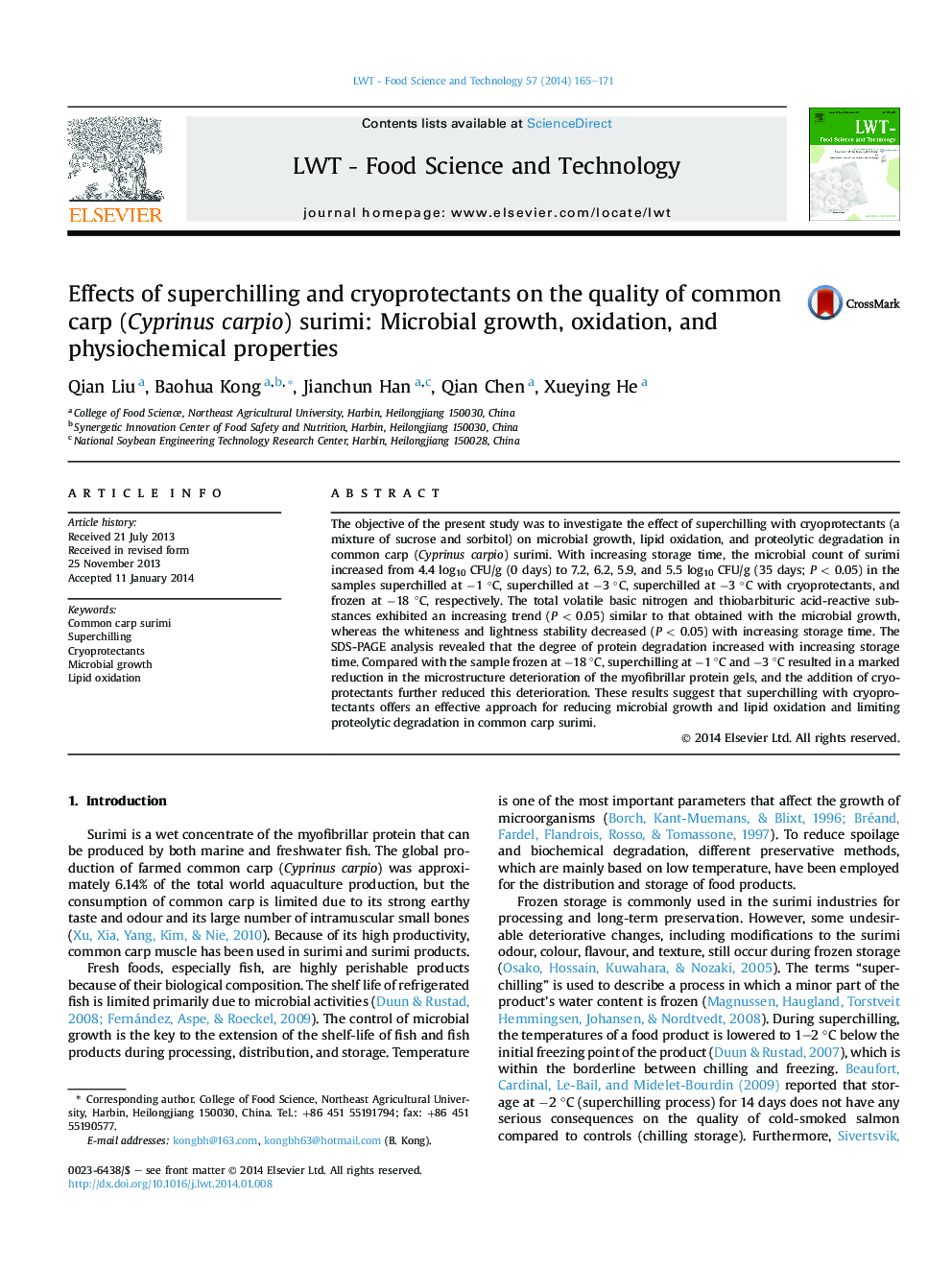| Article ID | Journal | Published Year | Pages | File Type |
|---|---|---|---|---|
| 6403752 | LWT - Food Science and Technology | 2014 | 7 Pages |
â¢Superchilling at â3 °C with cryoprotectants maintained good quality of carp surimi.â¢Microbial growth and oxidation were inhibited by superchilling with cryoprotectants.â¢Superchilling with cryoprotectants improved the microstructure of the protein gel.â¢Superchilling at â3 °C with cryoprotectants could reduce proteolytic degradation.
The objective of the present study was to investigate the effect of superchilling with cryoprotectants (a mixture of sucrose and sorbitol) on microbial growth, lipid oxidation, and proteolytic degradation in common carp (Cyprinus carpio) surimi. With increasing storage time, the microbial count of surimi increased from 4.4 log10 CFU/g (0 days) to 7.2, 6.2, 5.9, and 5.5 log10 CFU/g (35 days; P < 0.05) in the samples superchilled at â1 °C, superchilled at â3 °C, superchilled at â3 °C with cryoprotectants, and frozen at â18 °C, respectively. The total volatile basic nitrogen and thiobarbituric acid-reactive substances exhibited an increasing trend (P < 0.05) similar to that obtained with the microbial growth, whereas the whiteness and lightness stability decreased (P < 0.05) with increasing storage time. The SDS-PAGE analysis revealed that the degree of protein degradation increased with increasing storage time. Compared with the sample frozen at â18 °C, superchilling at â1 °C and â3 °C resulted in a marked reduction in the microstructure deterioration of the myofibrillar protein gels, and the addition of cryoprotectants further reduced this deterioration. These results suggest that superchilling with cryoprotectants offers an effective approach for reducing microbial growth and lipid oxidation and limiting proteolytic degradation in common carp surimi.
